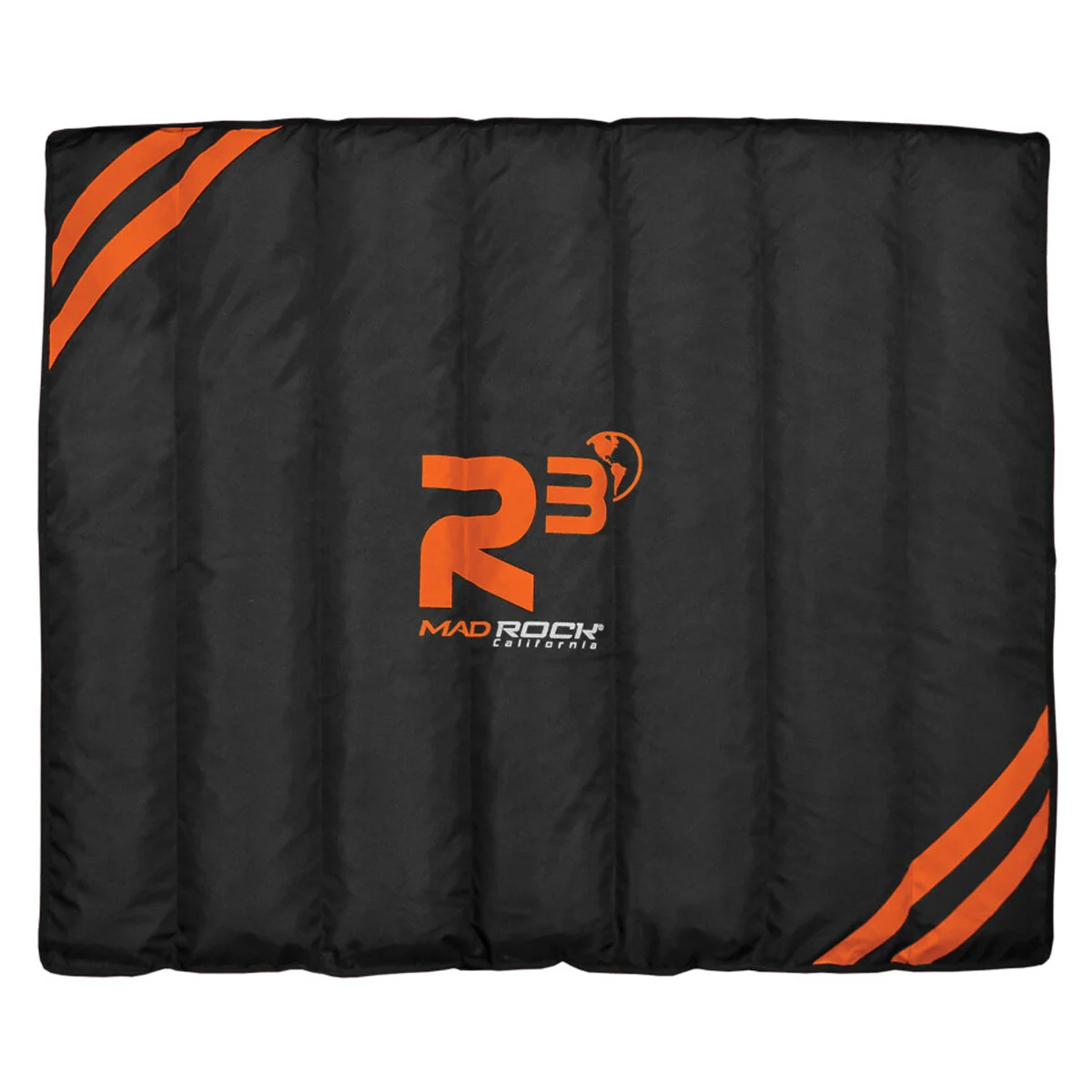The Mad Rock R3 a radical new direction in pad design. A baffled design creating chambers filled with recycled EVA foam, which can be easily wrapped around or draped over objects.
Topper Pads
Espresso Note
Read Time - 2 minutes
May 2020
If you have yet to purchase your first pad for outdoor bouldering, then this is not the article for you. But, our boulder pad buying guide is, read here.
As you progress in your bouldering career, you will feel the pull to purchase more pads. However, just purchasing a second ‘daily driver’ style pad may not be the best investment in your climbing. For some climbers, a topper pad may be their ideal second pad, they just don’t knot it yet.
Topper pads, are fairly self explanatory. They are auxilliary pads which sit on top of the pad patchwork beneath a climb. They add additional cushioning, as well as providing a uniform landing surface. The gutters which form between pads on the ground is a frequent source of injury.
Some topper pads, such as the Mad Rock’s R3 can function as standalone pads (although Mad Rock do not advise this), and others such as Organic’s Blubber cannot. Topper pads are thinner and less structured than a fully fledged pad, being designed to conform to the surface they are laid on. This has the advantage of making them very good for covering protruding rocks or objects as well as a mosaic of pads.
Topper pads are ideal for climbers who regularly boulder in groups. If this is you, chances are you often have enough pads and spotters to climb in relatively safety. Would another mid size pad really add anything? Probably not.
However, a topper pad would add greater security, and flexibility, allowing you either to create a uniform ground surface, or wrap dangerous features near the landing. The ability to wrap and warp a lightweight pad, allows you to be far more creative, read safer, with your padding strategy.
You may also enjoy our eBook ‘Bouldering Basics: A Handbook for Beginners’
Learnt something? Buy the No Thrills team a coffee to say thanks!

